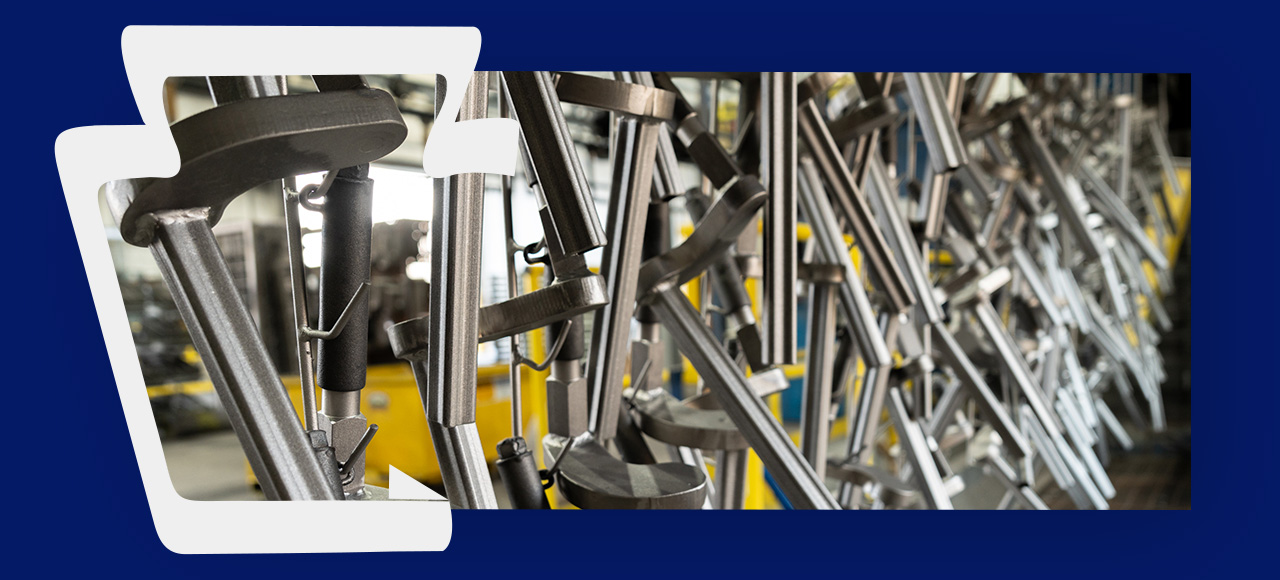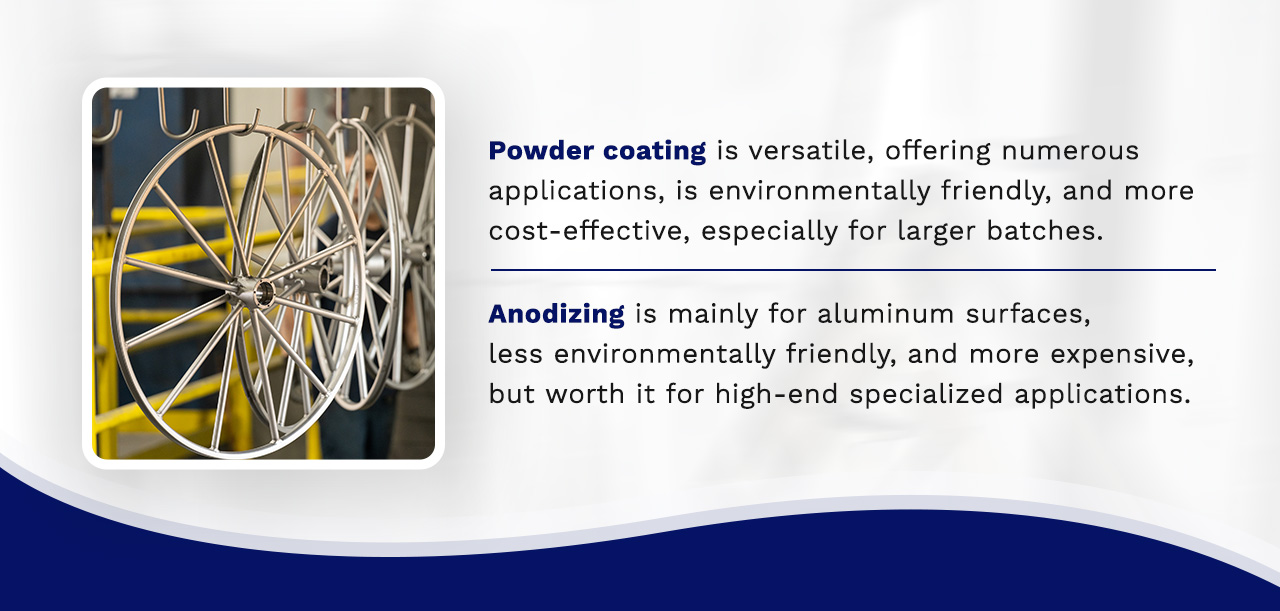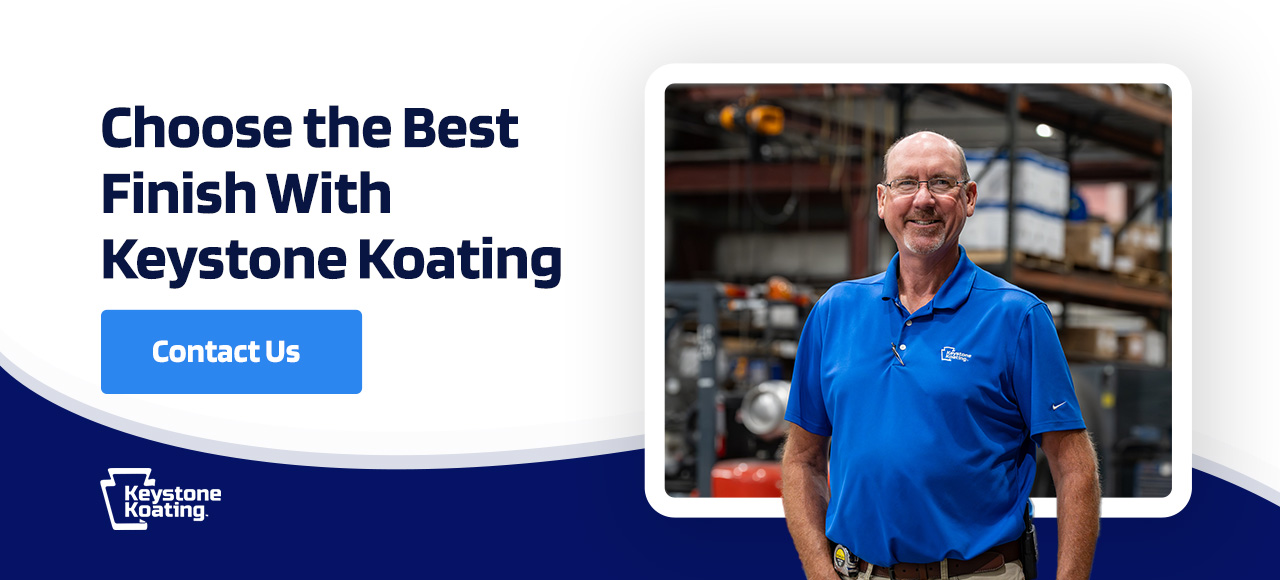
Updated October 14, 2024. Originally published July 15, 2021.
When you finish manufacturing an aluminum product, the final step is applying a protective coating for durability and appeal after repeated wear. Several coating options are available, but powder coating and anodizing are the most popular.
Understanding the difference between powder coating and anodizing is essential for selecting the best option for your product. Weighing the advantages of each process against your preferences and your intended application’s requirements determines which coating will be the most effective.
What Are Powder Coat Finishes?
Powder coating is a process in which positively charged powder is electrostatically applied to a grounded object and heated to melt and flow. This method creates a smooth, tough layer. The resulting powder coat is durable, corrosion-resistant, and resistant to ultraviolet (UV) light. You can use it on almost anything you can ground, including metals, wood, plastic, glass, composites and medium-density fiberboard (MDF).
The longevity and durability of your finished powder coat depend on the environment it’s exposed to and the preparation and application process. Turn to powder coating professionals with a thorough pre-treatment plan, like Keystone Koating’s eight-step pre-treatment process.
Powder coating is environmentally friendly, producing almost no waste. We can collect any powder that doesn’t stick to the object and reuse it, and we do not use solvents or toxic materials.
What Is Aluminum Anodizing?
Anodizing is an electrochemical process and a type of passivation that enhances the natural oxide layer on aluminum surfaces. This passivating technique involves immersing the aluminum in an acid electrolyte bath and passing an electric current through it. The aluminum oxide coating is hard, durable and weather-resistant. It is also transparent, though it can be dyed to create almost any color using an acidic electrolyte bath that causes nucleation in the finish. It resists damage from UV exposure and can last without peeling or flaking off.
When comparing anodized aluminum vs. powder coating, it’s essential to note that anodizing changes the surface of the aluminum. This process creates an integral layer to the metal, offering excellent wear resistance and a unique metallic appearance that can be dyed to create unique color finishes.
Generally, the anodized coating’s longevity and durability are directly proportional to the thickness of the aluminum oxide finish. However, several types of anodizing exist, and the operating environment plays a significant role in how they function. Anodization is highly limited in temperatures where it can operate. pH levels in the environment can also have an impact.
Anodizing aluminum products is generally considered less environmentally friendly because it produces some hazardous byproducts. However, anodizing does not emit any problematic solvents or heavy metal contaminants.
Can You Powder Coat Anodized Aluminum?
The short answer is yes, but it’s not always recommended. Powder coating over anodized aluminum requires special preparation to ensure proper adhesion. The anodized layer must be thoroughly cleaned and sanded to create a surface that the powder coating can bond to effectively.
Powder coating over anodized aluminum may negate some of the benefits of the anodization process. In most cases, it’s better to choose either anodizing or powder coating based on your needs rather than combining the two processes. If you’re unsure which method is best for your project, consult a finishing expert who can guide you based on your unique requirements.
Anodizing vs. Powder Coating: Which Is Best for Your Project?
The best finish for your aluminum product depends on the requirements of your intended application. When deciding, consider the following differences between anodized and powder-coated products:
Anodizing
Some limitations of anodizing include its lower temperature limit — 80 degrees Celsius (176 degrees Fahrenheit) — and its poor performance in environments with extreme pH levels. However, many techniques can be used to tailor anodizing to suit the use of the end product, making it highly versatile. Additionally, anodizing can generally better reach the interior surfaces of parts compared to powder coating. It is also a harder finish than what the underlying metal normally has, so it wears better and lasts longer.
Powder Coating
As powder coating involves coating products in different materials, it has numerous applications — as long as you can make something electrostatically stick to a substrate and melt it onto it, powder coating is typically a viable option. That said, the coating will usually be softer than the substrate, which can be a point of concern.
Overall, the choice between powder coating vs. anodizing often depends on the specific application. Both finishes are durable, with anodizing offering better wear resistance and powder coating providing superior chemical resistance — but remember, environmental factors play a central role in how durable one is over the other. Powder coating is also generally more cost-effective, especially for larger batches. Anodizing can be more expensive but may be worth the investment for certain high-end specialized applications.
Why Trust Us
With three decades of hands-on experience in industrial powder coating, Keystone Koating understands the strengths and limitations of various aluminum finishing methods. Our longevity in the industry has given us a deep understanding of various finishing methods, including how powder coating compares to other techniques like anodizing.
As a PCI 3000-certified powder coater, we’ve worked with various industries, from automotive to medical and agricultural. This diverse experience has allowed us to witness firsthand how different finishes perform across multiple applications and environments. Our insights on powder coating vs. anodizing durability come from real-world observations and extensive testing. Our AAMA verifications show our commitment to maintaining the highest industry standards.
Choose the Best Finish With Keystone Koating
Choosing between powder coating and anodizing is a crucial decision that can significantly impact your product’s performance and appearance. For more information about powder coating and anodizing and expert advice on how to choose the best option for your needs, contact our team at Keystone Koating or request a quote for your next project.



